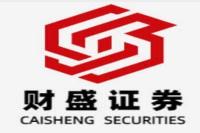China's Tech Tensions & Global Market Shifts: A Deep Dive into Recent News
Meta Description: Navigating the complex landscape of China's tech sector, US-China relations, global market fluctuations, and key economic indicators. A detailed analysis of recent news impacting global finance.
The world's economic stage is buzzing, a whirlwind of geopolitical shifts, technological advancements, and market volatility. From the simmering tensions between the US and China in the semiconductor sphere to the unexpected declaration of martial law in South Korea (quickly rescinded, thankfully!), the past few days have been nothing short of a rollercoaster. This isn't just another news roundup; this is a meticulously crafted deep dive, offering informed perspectives and insightful analyses gleaned from years of experience tracking these very trends. We’ll peel back the layers of seemingly disparate events, revealing the interconnected threads that shape our global financial landscape. Prepare to be engrossed as we unravel the intricacies of shifting supply chains, the strategic maneuvering of global powers, and the ripple effects these actions have on everything from your morning coffee to the price of your next tech gadget. We’ll cut through the noise, providing you with the clarity you need to understand—and even anticipate—the next major market move. This isn't just about numbers on a screen; it's about the human stories woven into the fabric of global economics, and how these events will impact you, your investments, and the future of the world economy. Buckle up, it's going to be a fascinating journey!
Navigating the Semiconductor Storm: US-China Tensions Escalate
The ongoing saga between the US and China regarding semiconductor technology has taken another dramatic turn. Major Chinese industry associations, including the China Semiconductor Industry Association, issued a joint statement urging domestic firms to carefully consider sourcing American chips. The statement highlighted concerns about the reliability and security of US-made chips, implying a significant shift in purchasing strategies. This isn’t just about business; it's a clear indication of escalating geopolitical tensions and the growing push for technological self-reliance within China.
Simultaneously, the Chinese Ministry of Commerce announced stricter export controls on dual-use items to the US, essentially limiting the flow of certain materials crucial for advanced technology. This move, mirroring similar restrictions imposed by the US, underlines the increasingly adversarial nature of the trade relationship and the determination of both nations to protect their technological advancements. This tit-for-tat escalation is a crucial factor to watch, as it directly impacts global supply chains and the cost of electronics worldwide. The consequences extend far beyond just semiconductors, affecting a wide range of industries that rely on these materials.
The People's Republic of China's Foreign Ministry also lodged a formal protest with the US regarding its updated semiconductor export controls, calling for fair competition and respect for market principles. This diplomatic pressure underscores the economic and strategic significance of the semiconductor industry in the larger geopolitical context. It's a high-stakes game of technological dominance, and the ramifications are far-reaching.
Beyond Semiconductors: A Wider Economic Panorama
While the semiconductor standoff dominates headlines, several other significant developments paint a more complete picture of the current market landscape:
-
South Korea's Brief Martial Law: The sudden and short-lived imposition of martial law in South Korea, though quickly lifted, sent shockwaves through global markets. This unexpected event highlighted the inherent unpredictability of geopolitical risks and their potential to destabilize even seemingly stable economies. While the specific reasons were swiftly clarified, it served as a potent reminder of the fragility that can underlie even the strongest economies.
-
China's State-Owned Enterprise Restructuring: China's push for consolidation within its state-owned enterprises (SOEs) signals a strategic effort to boost efficiency and focus resources on key strategic sectors. This proactive approach aims to enhance competitiveness and strengthen the nation's economic standing on the global stage. This consolidation, however, could lead to increased market concentration and potential impacts on competition.
-
Interest Rate Dynamics: The central bank's actions, including the recent 7-day reverse repo operation, indicate a calculated approach to managing liquidity and interest rates. The close monitoring of government bond yields suggests a delicate balancing act to stimulate economic growth while avoiding inflationary pressures. A deep understanding of these subtle shifts is crucial for successful investment strategies.
-
Real Estate Market Trends: The continued recovery in the Shanghai real estate market, evidenced by high subscription rates for new developments, suggests a potential rebound in consumer confidence and a gradual stabilization of the sector. However, concerns remain regarding the overall stability of the real estate market and its potential impact on the wider economy.
-
Market Sentiment and Volatility: The recent fluctuations in the Shanghai and Shenzhen stock indices, along with trends in the Hong Kong and other Asian markets, reflect a turbulent global economic environment. Analyzing the performance of specific sectors—like the rise of the non-metal materials sector and the decline in the semiconductor sector—provides crucial insights into shifts in investor sentiment and market expectations. This highlights the importance of diversification and a robust risk management strategy.
Key Economic Indicators to Watch
Understanding the global economic situation requires paying close attention to key metrics. Here's a snapshot of recent data:
| Indicator | Recent Trend | Significance |
|--------------------------|--------------------|-------------------------------------------------------------------------------|
| Shibor (Shanghai Interbank Offered Rate) | Mixed | Reflects liquidity conditions in the Chinese interbank market. |
| Government Bond Yields | Rising | Indicates shifts in investor sentiment and expectations of future interest rates. |
| US Treasury Yields | Rising | Reflects global market sentiment and inflation expectations. |
| FX Rates (USD/CNY) | Fluctuating | Shows the relative strength of the US dollar against the Chinese yuan. |
| Stock Market Indices (Shanghai, Shenzhen, Hong Kong etc.) | Volatile | Provides overall indication of market sentiment and economic health. |
| Commodity Prices (Oil, Gold, Metals) | Variable | Reflect global supply and demand dynamics and investor sentiment towards risk. |
Frequently Asked Questions (FAQs)
Q1: How significant is the US-China semiconductor dispute?
A1: This dispute is incredibly important, impacting global technology supply chains, geopolitical relations, and national security strategies of both countries. It's a key driver of current market uncertainty.
Q2: What are the implications of China's SOE restructuring?
A2: This restructuring aims to improve efficiency and focus resources, potentially boosting China's global competitiveness but also raising concerns about market dominance.
Q3: How are interest rate shifts impacting the global economy?
A3: Interest rate adjustments reflect central banks' responses to inflation and growth. These shifts influence borrowing costs, investment decisions, and overall economic activity.
Q4: What's the outlook for the Chinese real estate market?
A4: While Shanghai shows signs of recovery, the overall outlook for the Chinese real estate sector remains volatile and requires careful monitoring.
Q5: How can I navigate the current market volatility?
A5: Diversification, robust risk management, and staying informed about key economic indicators are crucial for weathering market turbulence. Consulting with a financial advisor is also highly recommended.
Q6: What are the broader geopolitical implications of these events?
A6: These events highlight increased global competition, particularly between the US and China, and the potential for further economic and geopolitical tensions.
Conclusion: A Time for Vigilance and Strategic Adaptability
The global economic landscape is dynamic and fraught with uncertainty. The interplay of geopolitical tensions, technological advancements, and market fluctuations requires a nuanced understanding and a strategic approach. Staying informed about key economic indicators, monitoring geopolitical developments, and maintaining a diversified investment strategy are crucial for navigating this challenging period. The coming months will undoubtedly bring further twists and turns, necessitating a constant reassessment of the situation and a willingness to adapt to the evolving market conditions. Staying informed and remaining adaptable are key.



